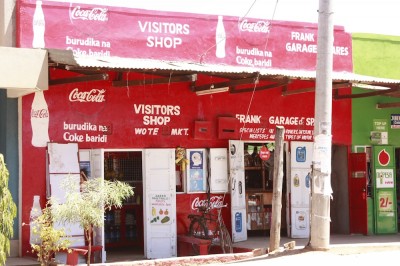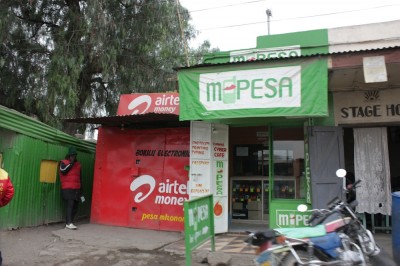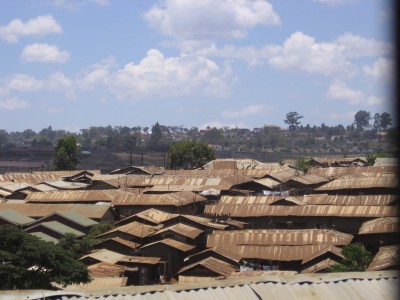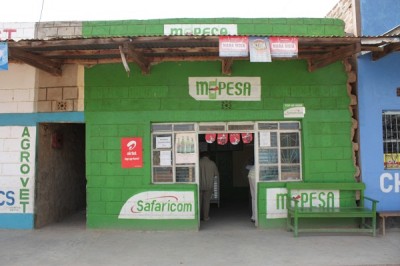Archive for the ‘emerging market’ tag
Where Opportunities Lie in the African Mobile Space
Africa straddles two realities. One is underpinned by the belief that Africa is the next frontier and measures the continent’s progress against an expected trajectory and momentum modeled on that which developed economies have followed in the past. As the continent leapfrogged wireline technology to adopt mobile at an astoundingly unexpected rate over the first 5 years of this millenium, it proved a point to the rest of the world. Africa is the present frontier. This is the other reality where the continent has brought to market a number of ‘firsts’. Airtel’s (Celtel at the time) borderless mobile network that features no roaming fees, the envy of European consumers. MPesa, Vodacom’s mobile money platform that has been very successful in Kenya and now growing in Tanzania and other countries.
According to the GSM Association, there are an estimated 649 million subscribers in Africa and an estimated 86 million being added to this number by the end of 2012 making Africa the world’s second largest mobile market and the fastest growing in the world. Even then, there’s still an estimated $36 billion of untapped revenue from growth in the 25 largest mobile markets on the continent. Unlike in developed nations, 96% of all subscriptions are pre-paid with voice dominating the revenue matrix. In some markets, data is growing considerably fast contributing significant revenues to the operators’ ARPU. Safaricom, for instance, generated just over $1.1b in revenue with voice calls contributing 67% a 1.2% drop on the previous year. Mobile and fixed data on the other hand jumped 81% compared to the previous year as subscribers used their modems and phones more to access the Internet. More Africans are buying mobile devices resulting in more endpoints added to a highly resilient, ubiquitous and geo-aware distribution platform for content and services.
The rise of mobile in Africa has brought with it obvious opportunities as well as a new class of opportunities that probably didn’t quite exist before. Opportunities for non-profits to reach more people at lower costs, governments to provide services more effectively and across larger geographies, for business to reach more customers and scale at lower cost. Mobile is making it possible for small and medium sized enterprises to compete with big business in ways they couldn’t just a few short years ago. Mobile isn’t just changing the operating landscape for consumer/citizen facing organizations, it’s changing the game. The trifecta of fast growing extensive data networks, cheap data-enabled handsets and a fast growing mobile money ecosystem is setting the stage for probably the greatest disruptions to the landscape yet. We are observing the emergence of fascinating opportunities in Africa, many which are providing new growth areas and could potentially power GDP growth further over the coming years. Here are a few;
- OpenGov and mGov – Govenments can now potentially reach more citizens than ever before with services that don’t require physical access to government offices. For instance, mobile allows governments to provide birth registration, community policing and even payment of taxes (Tanzania allows the use of MPesa for tax payments) at very low cost. It is also possible to now involve citizens in their own governance and scale programs further faster and cheaper than ever before. These also presents new opportunities for businesses that can provide governments with the tools they need to get the job done. Socrata and Knoema, for instance, provide visualization and analysis platforms for the Kenya government’s open data initiative and the African Development Bank Open Data for Africa portals respectively. However, there are still opportunities for developers who can build applications that help communicate public data in a way that citizens can easily understand on mobile phones.
- mHealth & mEducation – There are, as far as I can tell, no commercial successes in Africa in the mHealth and mEducation sub-sectors. However, programs like Dr. Math running on MxIt in South Africa and MOTECH currently in Ghana demonstrate the potential that lies untapped in the mobile platform as a channel. One of the ventures to watch is MedAfrica which is using Kenya’s Open Data in addition to other datasets provided by industry stakeholders to provide a commercial mHealth service.
- Financial intermediation – In this space lies the well known mobile-to-mobile money transfer services that emerged on the continent 5 years ago such as MPesa and Zap (now Airtel Money). Since then, the high and rapid penetration of mobile subscriptions and mobile money subscriptions in East Africa created new opportunities for financial services intermediation. Mobile-to-bank / bank-to-mobile services as well as mobile-to-web services that now make ecommerce via mobile money a reality have began to take hold. South Africa’s Fundamo has been present in the mobile money space since 2002 and was recently acquired by Visa International. Kenyan firm Cellulant, now serving institutions in at least 8 countries in sub-Sahara Africa is powering mobile banking services and content distribution via mobile phone for institutions such as Barclays Bank. Pesapal, launched in
20102009 as the first payment gateway that made ecommerce via mobile money a reality. It now also provides utility and bill payments via mobile money and debit/credit cards. Since its launch, other firms have emerged in that space including Bilmobile in Egypt, iPay in Kenya and many more. This continues to be a growth area across the region and one where new opportunities will continue to emerge. - Business platforms – Small and medium sized businesses adopted mobile money fairly early. However, they failed to integrate mobile with business infrastructure. That is changing now with players like VirtualCity providing supply chain platforms that make sales and distribution management solutions via feature phones and smart phones possible. Their DistributR solution is now available as SaaS with the potential to scale rapidly across the region. ERP maker SAP has also recently announced the launch of it’s mobile solution that will provide businesses on their BusinessOne platform with mobile extension of their ERP services. In the past, achieving this level of enterprise mobility required huge investments in infrastructure and software. Now mobile-powered business solutions can be rolled out by small business within days of the decision to acquire. Enterprise mobility is probably the least exploited opportunity by local developers and one which international firms with the technology and understanding of the African market could seize for growth.
Message from Africa: We Have Money. We Will Buy.
This is the first of a four-part series on Africa, The Present Frontier.
The usual picture of Africa rarely includes middle class consumers and designer brands. In fact, it rarely portrays the other reality, the true potential that lies on the continent and in its people. Sadly, this robs many western brands off the opportunity to grow their businesses by establishing a presence on the continent. There’s a fast emerging middle class in Africa that has money and aspirations. Are there enough businesses supplying hope and the stuff they dream about?
In April 2011, the African Development Bank released a report on Africa’s Middle Class that showed the floating middle class has grown to over 20% of the population. This segment between the poor and the established middle class, is the only part of the economic pyramid that has had significant growth over the last 20 years achieving 100% growth in the last 30 years. They maybe susceptible to shocks that easily push them back into poverty but unlike their counterparts living in abject poverty, they have money to spend. With a population of 1 billion people, approximately 700million of whom have mobile devices, I can easily suppose a significant number of the floating class are connected. In itself, that is only important to telcos. However, it points to a growing trend everywhere else. An increasingly larger number of people with money to spend on connectivity (for whatever reason) signals a growing appetite for technology and services that connects people. It also signals a narrowing of the digital divide. Among many other signals emmanating from Africa, these two bode well for tech enterprise in Africa. Africa is attractive.
A number of brands in both tech and non-tech sectors have seen the signals from the continent and jumped on the opportunity to achieve phenomenal growth. Here are 7.
- Syngenta recently announced it’s intention to grow its Africa business to $1billion. The firm will invest $500million and grow its workforce by 700 over the next 10 years.
- Diageo has invested $1.5billion in Africa over the last 5 years. Their Kenyan unit, maker of the iconic Tusker beer brand, EABL was one of the first listed firms to breach the $1billion market capitalization milestone.
- Unilever currently earns over $3.5billion a year from its African operations and is working to double that within the next 5 years. A big part of their focus appears to be a push deeper into rural areas where a good number of the floating and middle income population live.
- Visa acquired South African payments firm Fundamo for $110million as part of their strategy to grow their business on the continent. Despite the apparent threat their business faces from mobile payments, Visa sees great potential on the continent and executives contend that mobile payments won’t put them out of business. The acquisition of Fundamo signals their intent to never let mobile out of their sight.
- Samsung grew revenues in Africa to $1.2billion by 2010 and began a push to grow this to $10billion by 2015 with investments of $140million on the continent. Africa is the fastest growing market for mobile phone market in the world.
- Designer cosmetics maker L’Oreal expects Africa’s middle class to double over the next 10 years. It aims to grow its market 10%-20% year on year until it attains a 16% market share in Africa.
- Nokia was until recently the world’s largest mobile phone vendor. It’s number 1 position is now held by Samsung. However, five years ago, Nokia’s sales in Africa were estimated at $7billion (according to Wikinvest). It’s ability to churn out devices that struck a chord with African consumers was legendary and is still one of the continent’s most recognizable brands.

CocaCola branded shop in Kenya's Makueni District. CocaCola is the most successful beverages and FMCG business in sub-Sahara Africa.
Macroeconomic signals emanating from the continent have of course played a big role in attracting foreign investment. GDP growth in African countries touches double digits in some countries, growth rate unlikely to be witnessed in developed economies where economic growth has stagnated for some and shrunk in others (hello Greece!). Driven by agriculture, tourism, minerals and financial services, economies on the continent have outperformed those in the west even during the worst of the recent financial crisis. Sub-sahara Africa in particular has seemed insulated from the chaos in financial markets in the rest of the world. Africa is growing.
Whilst the usual story about Africa has attracted non-profits and social entrepreneurs to the continent, the story of consumer aspirations, economic growth, political stability and an increasingly educated and savvy population has attracted their for-profit counterparts. Some of the social enterprises that have setup shop here have had great success whilst others have come to Africa to die. A good indicator of whether a social enterprise will succeed on the continent is sometimes determined by how effectively it communicates hope to its market. When marketing and communications departments use the same tone for fundraising in the west to sell merchandise in Africa, one can expect dismal results because the tone in the fundraising message is one of hopelessness and desperation.
For-profit enterprises have not had to struggle with this dual-message strategy. Their message is usually ‘Buy my great stuff’ or ‘My stuff will make you great’. Even when they deliver very little hope, it goes a longer way than low prices. Some big brands have learned this the hard way. Expecting to acquire huge market share by adopting a low-margin high-volume business model that was successful in India, Airtel was handed a rude shock by the continent and has had to go back to the drawing board.
As some have suggested, hope can make a big difference to those living in economic hardship sometimes resulting in higher spending. Africa has great aspirations. Some brands have known this all along and have been handsomely rewarded by customers in Africa. Here are two brands that have always had great success with the BoP customer in Africa.
- Safaricom is East Africa’s largest mobile phone company with the world’s most notable mobile money platform, MPesa. Here’s an ad campaign they have been running recently in Kenyan media. Even with the most expensive on-net calls Safaricom remains by far the largest network by subscriber numbers and revenue.
- Coca Cola has been very successful in Africa. Present in 56 countries and territories on the continent and with over 160 bottling plants this soft drinks maker has a distribution channel that is the envy of many in the fast moving consumer goods industry. In places where there is no medication, education or even healthcare, you may still find a Coke. Their advertising seeks to inspire and the results speak for themselves. Here’s an ad currently running on African television as part of their 1 Billion Reasons to Believe in Africa campaign.
Fast growing economies, a fast growing middle class, political stability and a growing ICT sector are current features of Africa that make it a great place to be for those seeking to expand. It is also increasingly attractive for technology businesses that understand the African customer or are willing to take the time to do so. Some of the top performing brands in Africa today understand this and have been on the continent for a long time. While everyone else was talking about Africa being the next frontier they saw Africa as the present frontier. It’s still early enough for businesses to establish a presence with new products and services that have not existed on the continent. Like Wonga launching it’s first international location in South Africa.
Africa is here. The message from Africa to the rest of the world is simple.
Have money. Will buy. Who’s selling?
Align With The BoP Customer’s Aspirations. Or Die.
Kibera is Kenya’s largest slum: informal settlement if we go by the more established euphemism in use today. The corrugated iron sheet roofs do not stand alone on this vast landscape but are interspersed by TV antennas, so many they seem to stand guard like an army watching over the roofs as far as the eye can see. Should the residents of Kibera be spending their hard earned money on television sets? Shouldn’t they be fighting their way out of poverty? Saving for their future? Investing in better healthcare?
I hear these questions frequently enough from visitors from the West. Very valid questions which even middle class Africans ask of their lower-on-the-BoP ‘brethren’. I especially hear these questions asked by many involved in social enterprises with products that have obvious benefits to users rural, poor or both.
There exists a disconnect between these organizations’ aspirations (for instance: eliminate the use of kerosene) and their customer’s aspirations (for instance: be connected to electricity) introducing some interesting challenges for vendors. The focus by the vendor on building a product that eliminates harm and improves well being leads the business into a cul-de-sac where great products go to die. The same cul-de-sac where healthfood for the masses is to be found together with last year’s new year resolutions. The benefits of the product are undeniable and yet uptake remains poor. Sometimes the message behind the marketing communications destroys any chance a product has in the market. Especially when it asks customers to acknowledge, by purchasing the item, that they are financially unable to cope with the rising cost of living. An admission of defeat. The product does not provide a roadmap for advancement and by being an end in itself rather than a milestone on the journey to success catalyzes little hope for the future. No one wants to be hopeless, no matter how affordable it is.
Putting a great deal of thought into the design of a product comes easy for social entrepreneurs (at least it should) because they put impact before financial reward. However, the always very noble motivation of the service or product informs its positioning in the market. A market that also includes purely commercial players playing by a different rule book. This positioning sometimes aludes, through the products marketing message, to the hardship, poverty or level in society the user is most likely to be in. The poor (generally speaking) don’t wear the title with honor and pride. Reminding them that they are poor and disadvantaged at the point of purchase may only work as long as a competing product that tells them they can be superstars doesn’t exist. Here are two thoughts that are stirred in me whenever I travel to rural areas:
The customer social enterprises seek to convert may be in a disadvantaged situation or season in their life. If your messaging speaks to them as such, there will be a problem. Rural customers, especially those towards the bottom of the economic pyramid, don’t necessarily view themselves as poor. They make sophisticated financial planning decisions all the time trading-off performance against running cost and cost of acquisition against status quo. Speak to the job they are trying to get done and the aspirations they carry or your business will be on the wrong end of the trade-off.
Price isn’t everything in Africa. Ask Airtel, they have found out the hard way. Features you think matter to users may be of little consequence when held up against alternatives. Equity Bank grew rapidly as word of mouth spread about their easy-to-access credit and easy-to-open bank accounts resulting in acquisition of customers previously classified as ‘unbankable’; long queues in banking halls and at the ATMs notwithstanding. Spending a little time (at the very least) with customers and listening to their story may provide you with clues on what they need to get done and how pressing the need for a solution is. The intensity of your customer’s pain dictates the value trade-offs they are willing to make.
A customer only experiences pain because they are trying to get something done without the level of success they consider acceptable. Innovations that have succeeded in Africa have empowered customers not disempowered them. Our next posts will delve a little deeper into this.
Regulation & Innovation – The Challenge for Governments
During the Internet Governance Forum conference held in Nairobi last September, Kenya’s head for e-Government Dr. Catherine Getao made an observation that probably holds very true in many places worldwide. Private sector innovations can happen in the absence of government policy but in many instances government can’t implement innovation in service delivery until legislation and policy is in place. This was in response to a comment I had made on the disparity between the rate of innovation adoption by government when compared to the private sector and the citizens.
Mobile money in Kenya provides a fairly good example of this. M-Pesa is not directly regulated under a full banking license but operates under a special dispensation from industry regulators. At public roll-out, the MPesa service allowed urban Kenyans, for instance, to send money easily and more safely to their rural folk. Service providers then implemented utility payments via mobile money and integration of mobile money with conventional banking services. Within 3 years, firms like PesaPal and iPay had emerged providing a bridge between mobile money and e-commerce. Services in this space are continuing to evolve every year.
Although I can send money, pay utility bills, buy goods and check my bank balance through my mobile phone, I still can’t pay government fees, taxes or levies on it. I still have to go to a bank like I did 5 years ago. Hence Dr Gitau’s comment alluding to the delay caused by the (usually long) wait for development of legislation to guide government adoption of new technology for service delivery.
So whereas mobile money was launched and has continued to evolve in an environment where regulation and policy was yet to be fully developed, the government was unable to leverage this technological gains for its own good. Mobile money in Kenya is a good example of how innovation preceding regulation can be good for the country. Although governments can create an environment for phenomenal progress (like Kenya’s has done), their inability to keep up with the momentum triggered by the private sector for service delivery (due to bureaucracy) is an example of how innovation preceding regulation can slow progress in eGovernance.
This is where the challenge lies for those designing the next generation of eGov services as well as the agencies/departments seeking to improve service delivery through ICT. A highly collaborative multi-stakeholder approach is, in my opinion, necessary to not only accelerate the rate of innovation but the speed at which governance frameworks evolve to cater for the emerging ‘new normal’.
Workshop: Building a Business on Mobile Apps.
Semacraft Consulting invites you to register for a workshop on Building a Business on Mobile Apps to be held in Nairobi, Kenya.
The workshop is based on research and insights gathered by the Semacraft team on the African market and will equip participants with the information they need to: Read the rest of this entry »
Tweet


